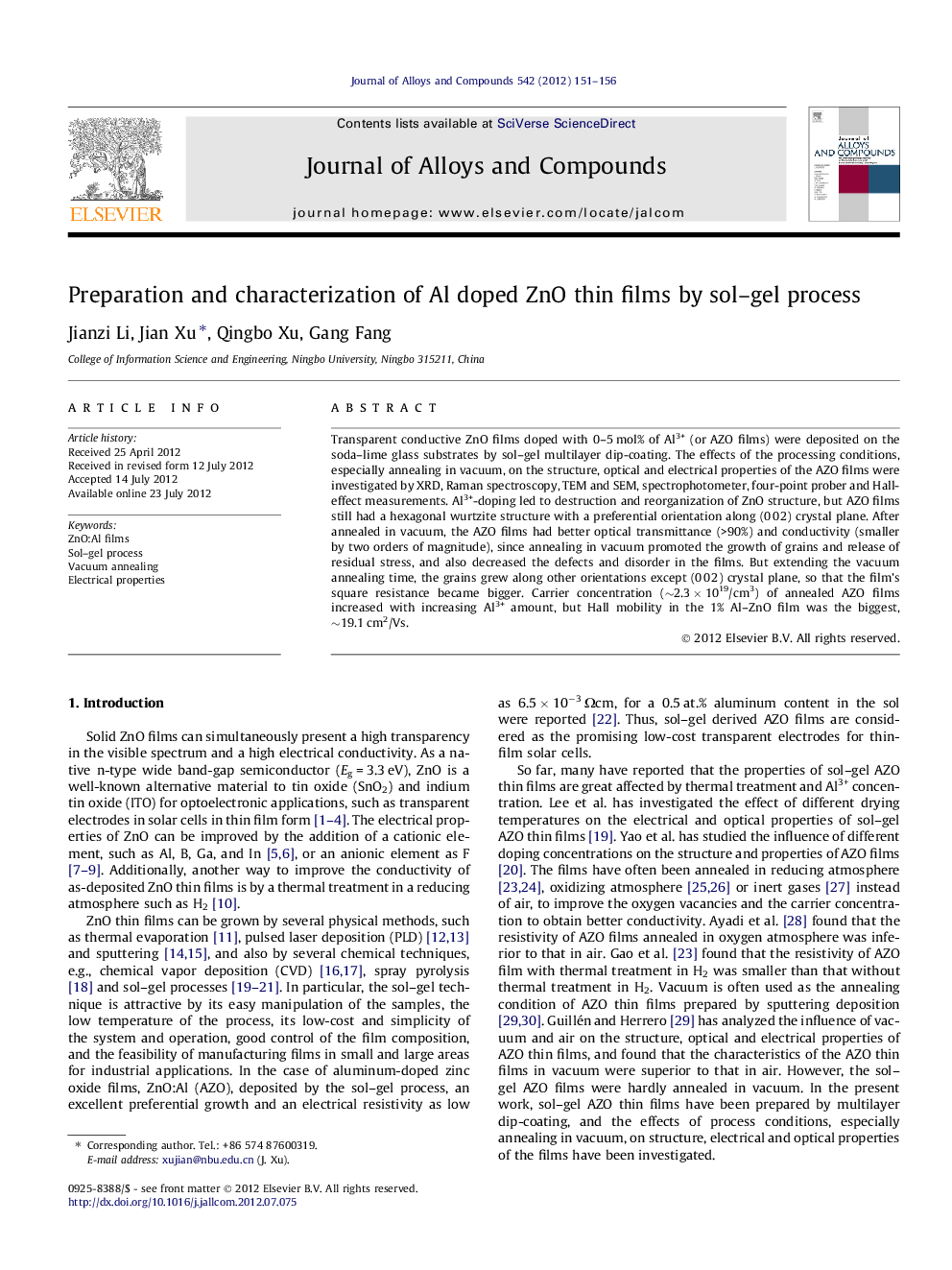| Article ID | Journal | Published Year | Pages | File Type |
|---|---|---|---|---|
| 1615340 | Journal of Alloys and Compounds | 2012 | 6 Pages |
Transparent conductive ZnO films doped with 0–5 mol% of Al3+ (or AZO films) were deposited on the soda–lime glass substrates by sol–gel multilayer dip-coating. The effects of the processing conditions, especially annealing in vacuum, on the structure, optical and electrical properties of the AZO films were investigated by XRD, Raman spectroscopy, TEM and SEM, spectrophotometer, four-point prober and Hall-effect measurements. Al3+-doping led to destruction and reorganization of ZnO structure, but AZO films still had a hexagonal wurtzite structure with a preferential orientation along (0 0 2) crystal plane. After annealed in vacuum, the AZO films had better optical transmittance (>90%) and conductivity (smaller by two orders of magnitude), since annealing in vacuum promoted the growth of grains and release of residual stress, and also decreased the defects and disorder in the films. But extending the vacuum annealing time, the grains grew along other orientations except (0 0 2) crystal plane, so that the film’s square resistance became bigger. Carrier concentration (∼2.3 × 1019/cm3) of annealed AZO films increased with increasing Al3+ amount, but Hall mobility in the 1% Al–ZnO film was the biggest, ∼19.1 cm2/Vs.
► The films are prepared by the easy sol–gel process with dip coating. ► Vacuum annealing process has been carried out to improve the conductivity. ► The effect of preparation condition on the structure has been studied by XRD, SEM. ► Vacuum annealing improves the electrical properties of the AZO films.
